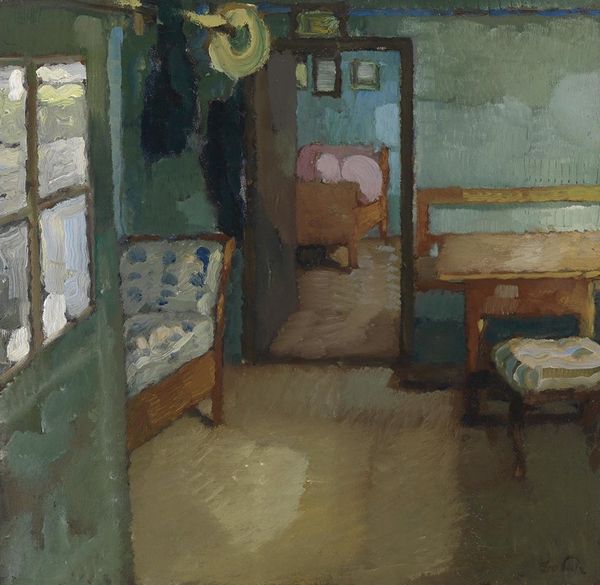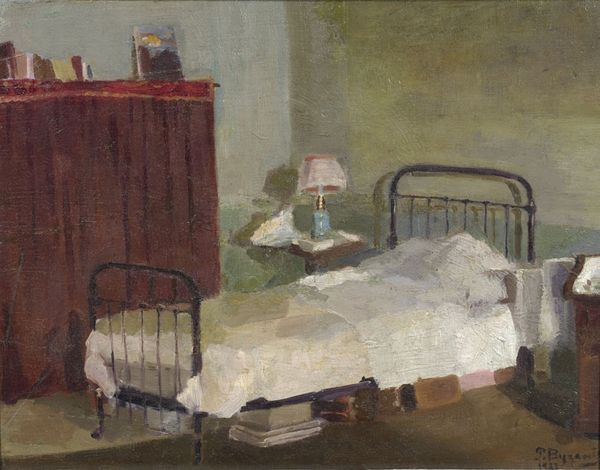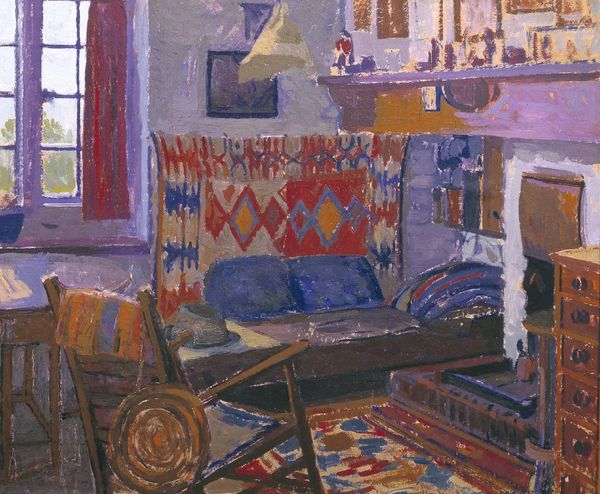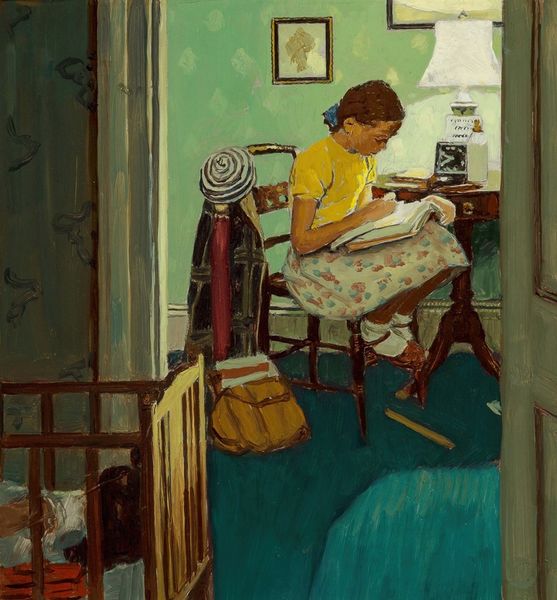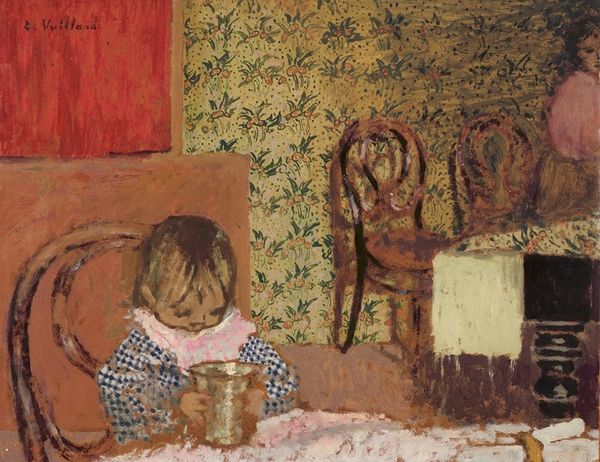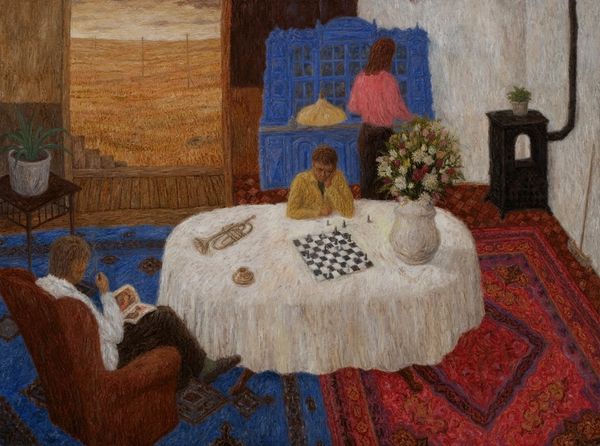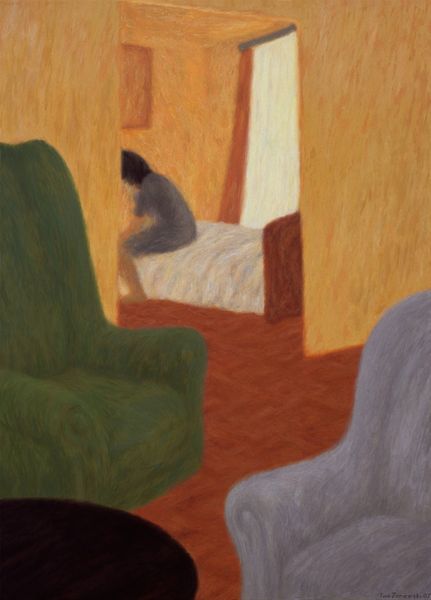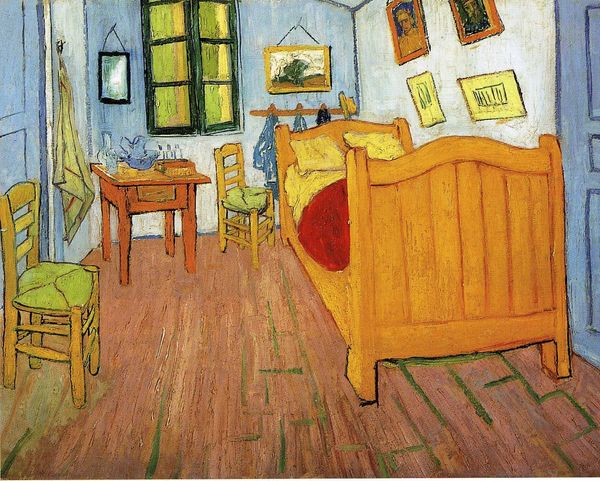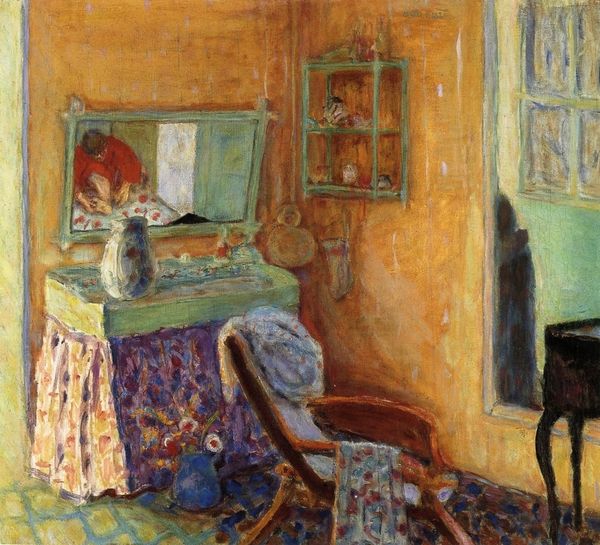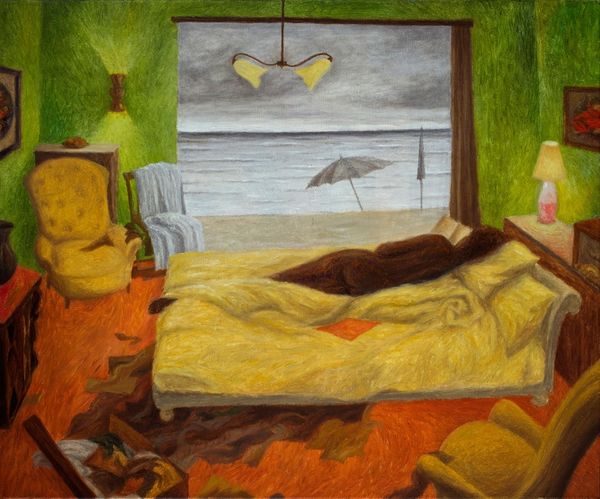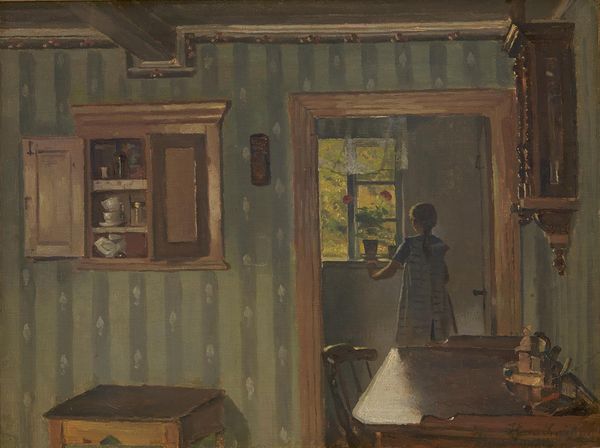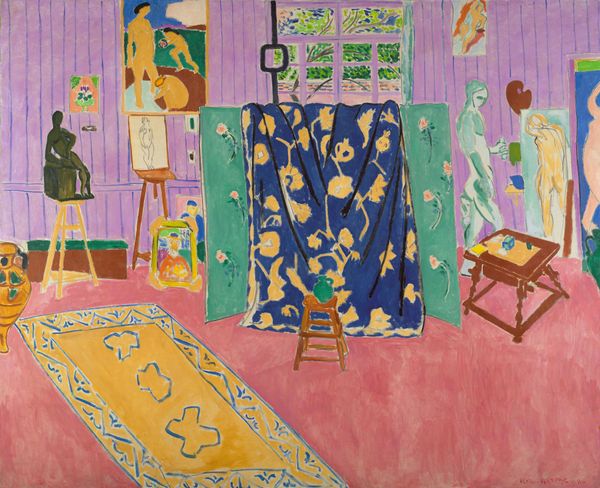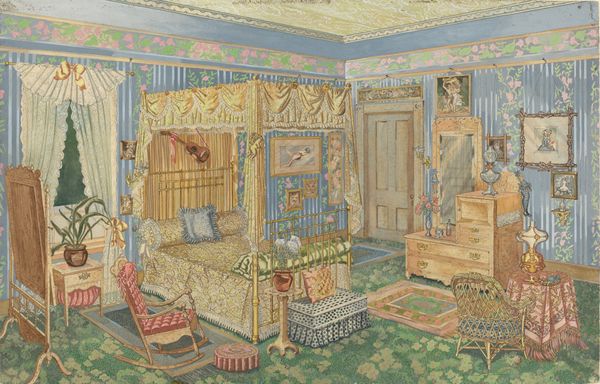
Dimensions: support: 510 x 508 mm frame: 624 x 625 x 95 mm
Copyright: © The estate of William Ratcliffe | CC-BY-NC-ND 4.0 DEED, Photo: Tate
Curator: William Ratcliffe's "Attic Room" presents us with an intimate domestic space, rendered in a square format that emphasizes its enclosed nature. Editor: It feels melancholic, doesn't it? The floral wallpaper, the sparse furnishings... there's a palpable sense of solitude, maybe even confinement, that resonates with historical notions of women's roles in domestic settings. Curator: The geometric structure of the room is quite striking. Note how Ratcliffe uses the angles of the ceiling to create dynamic lines that converge and diverge, disrupting any sense of conventional perspective. Editor: Absolutely, and it’s hard to ignore the socio-economic implications here. Attics are historically spaces relegated to those of lower status. Ratcliffe's choice invites us to consider narratives of class, labor, and the unseen realities of domestic service. Curator: The composition, with its subtle interplay of light and shadow, draws attention to the formal qualities. The textures of the rug, the wood, and the wallpaper create a rich visual experience. Editor: I see it as a commentary on the stifling nature of domesticity. The jug, isolated on the floor, becomes a symbol of unrealized potential, reflecting a woman’s confined existence. Curator: It's a beautifully balanced, albeit asymmetrical, arrangement. Editor: Yes, and that off-kilter balance perhaps highlights the inequities of the space.
Comments
Join the conversation
Join millions of artists and users on Artera today and experience the ultimate creative platform.
tate 7 months ago
⋮
Ratcliffe shows the room he slept in while he stayed at his brother’s house. The prominence of his boots, and the chair, suggest he had in mind Van Gogh’s pictures of such things, particularly the interior of his own bedroom in Arles. Following his teacher, Harold Gilman, Ratcliffe often painted the interiors of his own and his family’s houses. His first job had been as a pattern designer in London for the Wallpaper Combine and this is perhaps reflected in the insistent painting of the wallpaper here. Gallery label, September 2004
